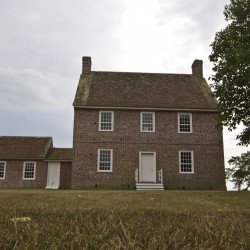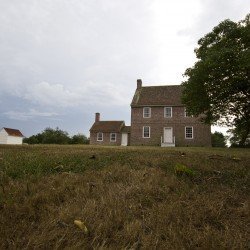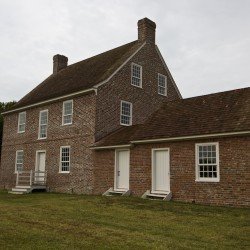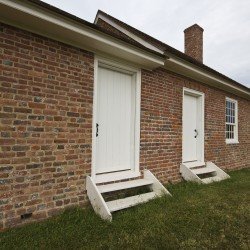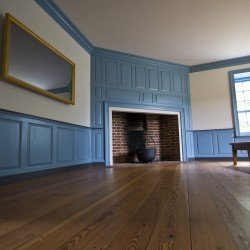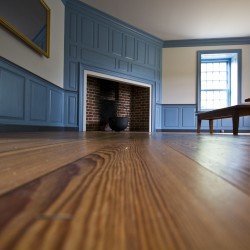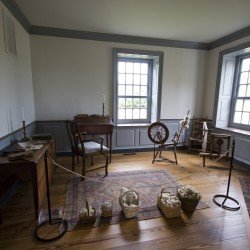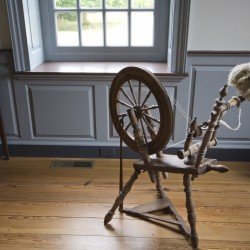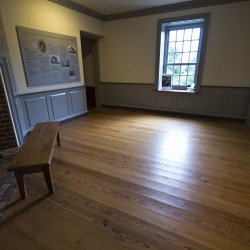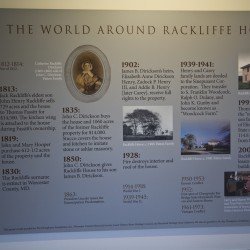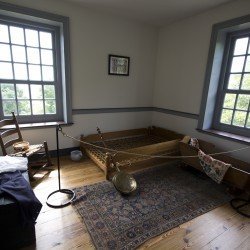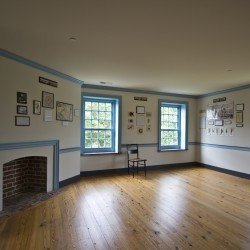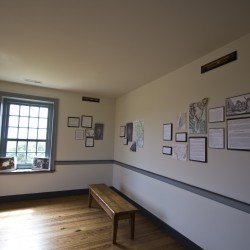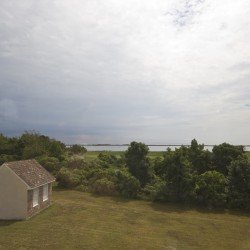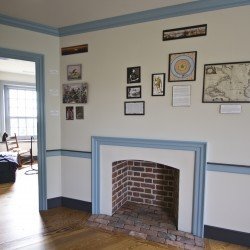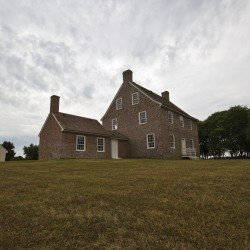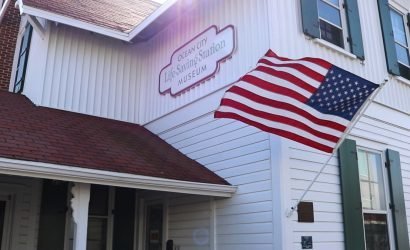This week, we decided to go off the beaten path and immerse ourselves in a little local history. During the hustle and bustle of summer, it’s easy to overlook the incredible sources for local history that we have in Worcester County, which is why we decided to spend the morning exploring the Rackliffe Plantation House. Overlooking Assateague Island and the Sinepuxent Bay, the Rackliffe House is home to an incredible story, not only in regards to its rich history, but to the fact that the local community pulled together to restore the house to its original grandeur. From the 1740s up to the present day, the the Rackliffe House is teeming with fascinating stories, many of which have yet to be discovered.
History at a Glance
Since we’re taking a metaphorical trip down memory lane this week on our journey through the Rackliffe House, it’s only fitting that we start at the beginning, with the inception of the manor home in the 1740s. Although if we really wanted to start at the beginning, we would go back even further, to 1250 B.C. when historians believe the Native Americans began occupying the Sinepuxent Neck. For now though, we’ll focus on the history of the house.
Captain Charles Rackliffe – a merchant planter and grandson to one of the earliest English immigrants to Maryland’s seaside – built Rackliffe House in the 1740s. The two-story, three-bay Manor House was built atop a prominent ridge to ensure expansive views of the water and of Assateague Island. The 1700-acre plantation soon became home to livestock, slaves, and the Rackliffe family. The property continued to pass down through generations of the Rackliffe family until 1839, when the Rackliffe family-line ceased in Worcester County. Over the next few decades, the house changed hands several times, with many bumps along the way, including the fire of 1928 that destroyed the interior and roof of the house. By the mid 1990’s, the house was in utter disarray. What would become of the historic property?
Restoration Begins…
By 1996, the future of the Rackliffe House was up in the air. The State of Maryland acquired the 114.8 acres and the house, but it would be another decade before any major moves would be made. In fact, it wasn’t until Tom Patton stepped up to the plate that the the Rackliffe House began its journey to restoration. “He was the vision and energy behind it,” explained Executive Director Jim Rapp this week during our tour. “Every old house needs a Tom Patton.” In the early 2000s, Patton began envisioning a greatly restored, drastically improved version of the house, and judging by the photos of the house at that time, it’s safe to say his vision took a LOT of imagination. “I think everyone had the same thought at that time” joked Rapp, noting that the house was completely overgrown with weeds and vines, leading many to believe that it was beyond hope. But Patton persevered, working with experts and archaeologists to bring the house back to life. Of course, very little was left of the house, so restoration would include rebuilding the house to look as it once did with the materials available today. One item that did remain were the bricks, which are original to the home.
“Tom was a big presence in this house…and still is,” said Rapp, who noted that Patton was able to see the restoration of the house before passing away a few years ago. Unfortunately, Patton was unable to see the house transition into a museum, which is what he had always hoped for. Today, the house operates as a museum, with tours available from May through October on Tuesdays and Thursdays, as well as the second Saturday of each month (presently). “Most days we get about 30 visitors a day, which is really great for a small museum,” said Rapp. Private tours are also available for large groups; in fact, the Ocean Pines Garden Club was wrapping up when we arrived.
Tours include a vast array of history on the property, including exhibits and artifacts that are reflective of life during the colonial era at the house. Old washing tubs, Westerwald pottery, onion bottles, old-school toasters…the items in the kitchen alone are worth the trip. Of course, many of the items are reproductions, but the idea is to immerse visitors into life at that time.
The tours are manned by volunteers, who Rapp praised for having a major impact on the museum’s success. With close to 40 volunteers, “we’ve really struck a chord with the community, we couldn’t do it without them,” he said. Every spring, Rapp holds recruitment and training for those interested in volunteering. “It’s definitely a group effort here, including the partnership with the park.”
“We’re one half a mile from the beautiful Assateague Visitor’s Center. We call the ‘the campus’ now because this is a big part of Assateague’s history too,” said Rapp, explaining that the museum has served as an excellent complement to the educational programs that the State and National Parks provide visitors. Families and beach-goers love taking a timeout from the beach to explore the museum and soak up a little local history (in addition to the sunshine). “There’s still a really deep interest in history,” noted Rapp adding that the museum is particularly unique because it is the only one of its kind that they know of on the East Coast – i.e. a colonial home, open to the public, in such close proximity to the beach.
Restoration Continues…
Of course the work is never really complete. New exhibits and plans are always in the works, including plans for the immediate future to add a kitchen garden. “We’re going to be doing some strategic planning this year to assess and really think hard about what we want to do next,” said Rapp. There is also a deep interest in developing more exhibits on the Native American influence on the land and the house.
New this year will also be the addition of weddings at the Rackliffe House. The museum has partnered with Encore Events for weddings on the property, with one already scheduled for later this month. Of course, clear guidelines and strict rules are in place to ensure protection of the property and its historical elements. “We are very, very sensitive to archaeological concerns,” said Rapp. The weddings will also serve as an added revenue source for the museum trust.
The Future of Rackliffe House
For now, the future of Rackliffe House is a promising one, thanks to the concerted efforts of the Rackliffe House Trust. With an ever-growing interest in local history and a strong connection to Assateague State and National Parks, we have no doubt the small museum will continue to thrive. And with a history that includes surviving the Revolutionary War, the War of 1812, and the Civil War, we’d say the house has earned its happy retirement.
The museum will remain open through October 29, so there’s still plenty of time to plan your own historical day trip for 2015. In the meantime, enjoy a few photos from our own trip!
Photos by Gina Whaley








